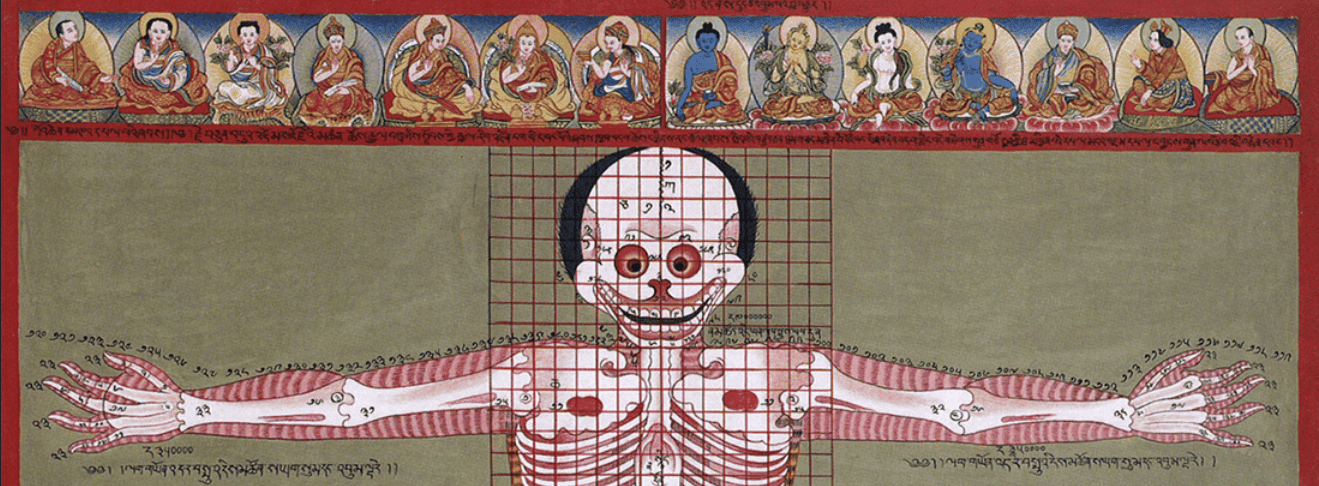
Introduction to Traditional Tibetan Medicine
Tibetan Medicine, Mongolian MedicineTibetan Medicine is a merge of systems: the traditional ‘Bon’ medicine of Tibet, and Ayurveda, imported from India with the arrival of Buddhism. It also had a lot of influence from Greek medicine via the Arabs. Denpa Shere Menoche was born in 1917 BCE and is credited with founding the Bon religion, and from this time are the first records of Tibetan Medicine. Thus, Tibetan Medicine has a recorded history of 3900 years.
The vast amount of Theory, as practiced today, is derived from the three Dosa system of Ayurveda (introduced with Buddhism), and has long been recorded on Thangkas (descriptive paintings) from which the oral tradition of teaching is based, and is still continued today.
Where Tibetan Medicine is distinctively different from Ayurveda is in their formulas, formula structures, and Materia Medica. Tibetan Medicine has been heavily influenced by Arab/Unani Medicine, Chinese Medicine as well as Ayurveda and their own long history. In fact, in 685AD, the King of Tibet invited physicians from India, China, Bhutan, Nepal, Persia, and elsewhere to translate their medical texts. Medicines such as Lapis Lazuli, Red Coral, Turquoise and Shilajit which are all important medicines in Unani, are well represented in Tibetan Medicine.
The elaborate Gem formulas (Precious Pills or Rin Chen) of Tibetan Medicine are almost definitely inspired by similar elaborate Gem formulas used by the Arab and Persian physicians.
Mongolian Traditional Medicine is very similar, using many of the same formulas as those found in Tibetan Medicine. It appears to have followed the introduction of Buddhism.
Therapies used include Herbal Medicine, Bloodletting, Cupping, Massage, as well as Mantra and Ritual etc.
You May Also Like:
Tibetan Materia Medica
Tibetan and Mongolian Formulas
Glossary of Tibetan Medicine Names
Tibetan Formula Families
Herb Groups of Tibetan Medicine
Tibetan Jewel Pills
Tibetan Medicine Photos
